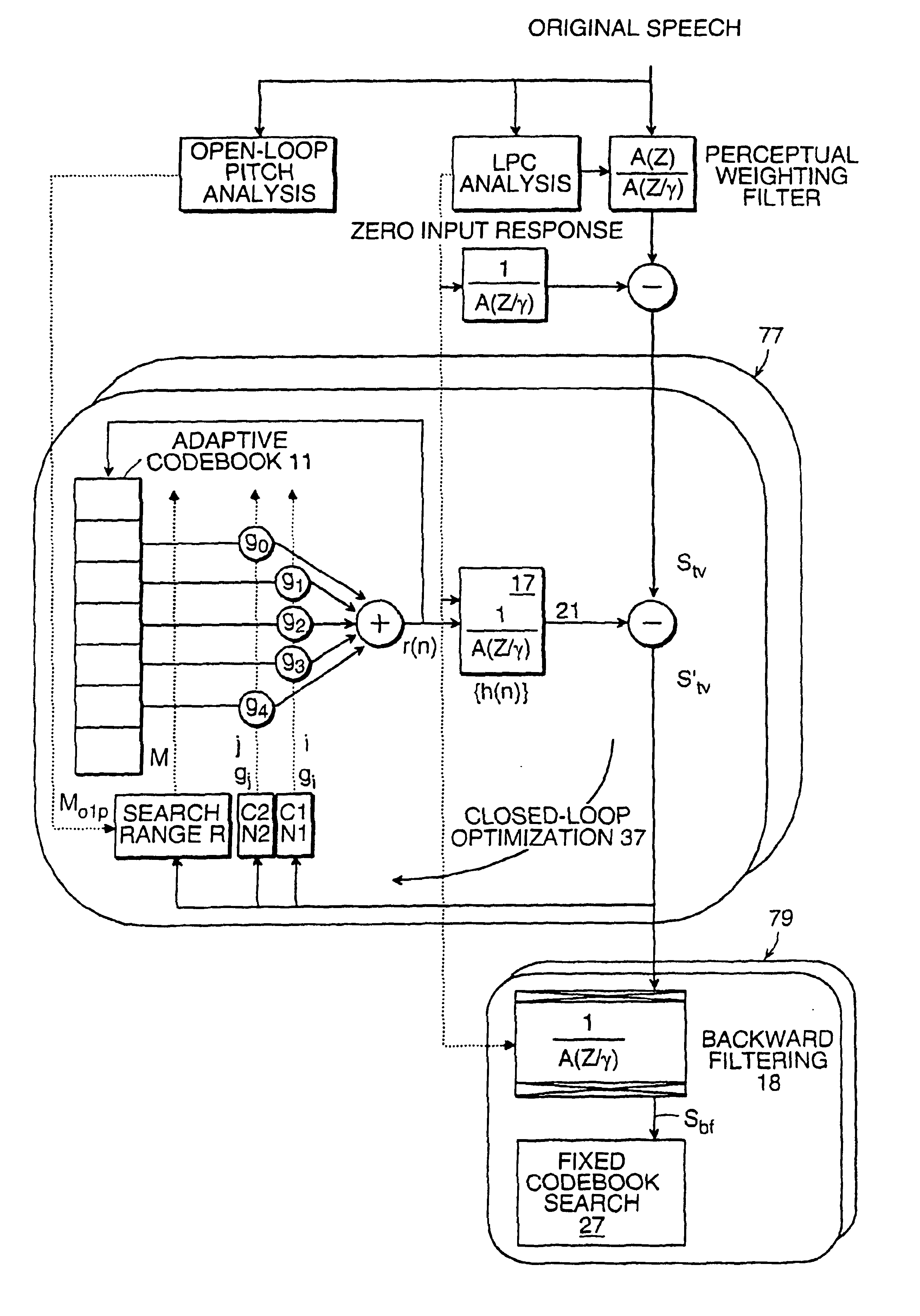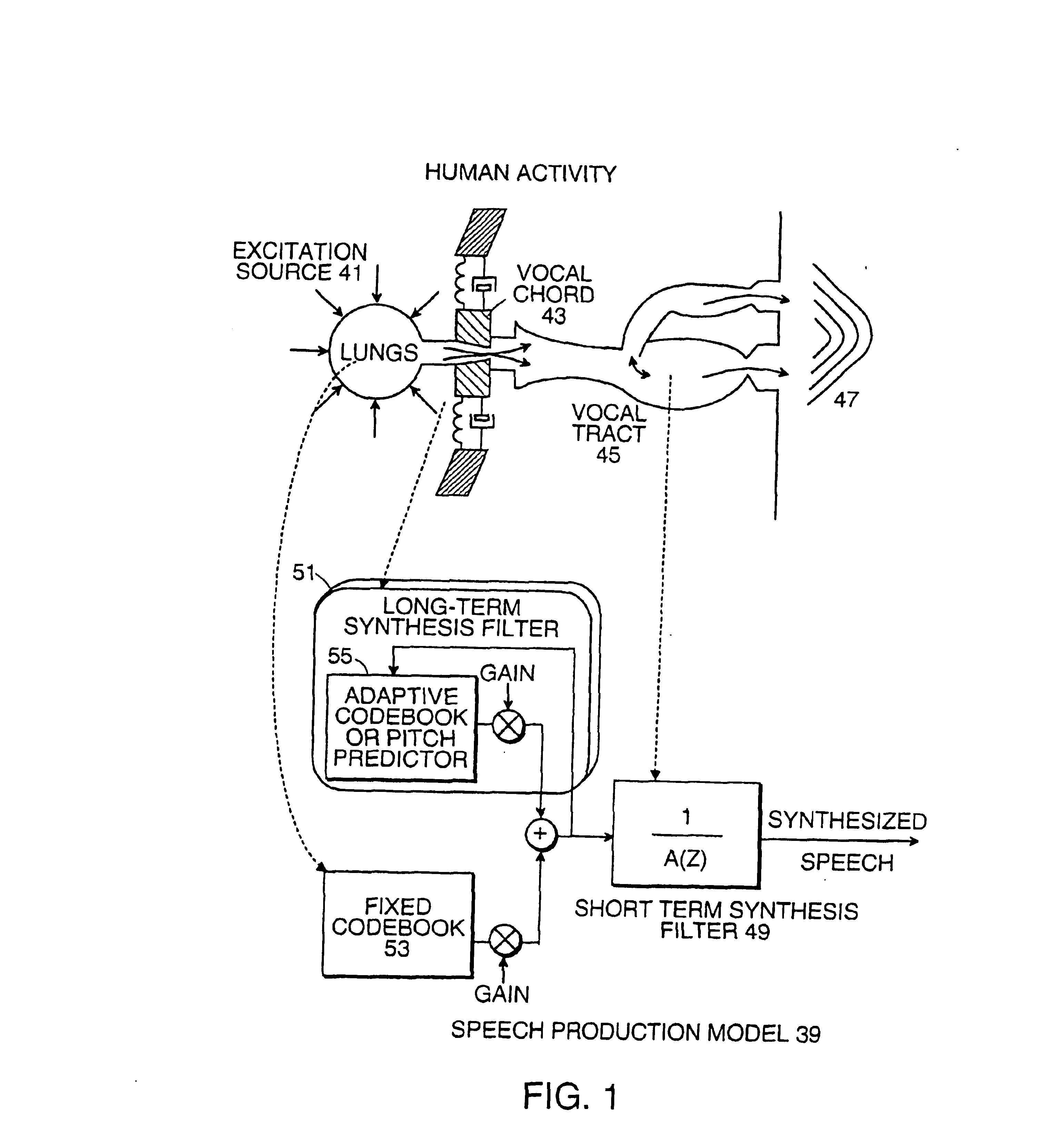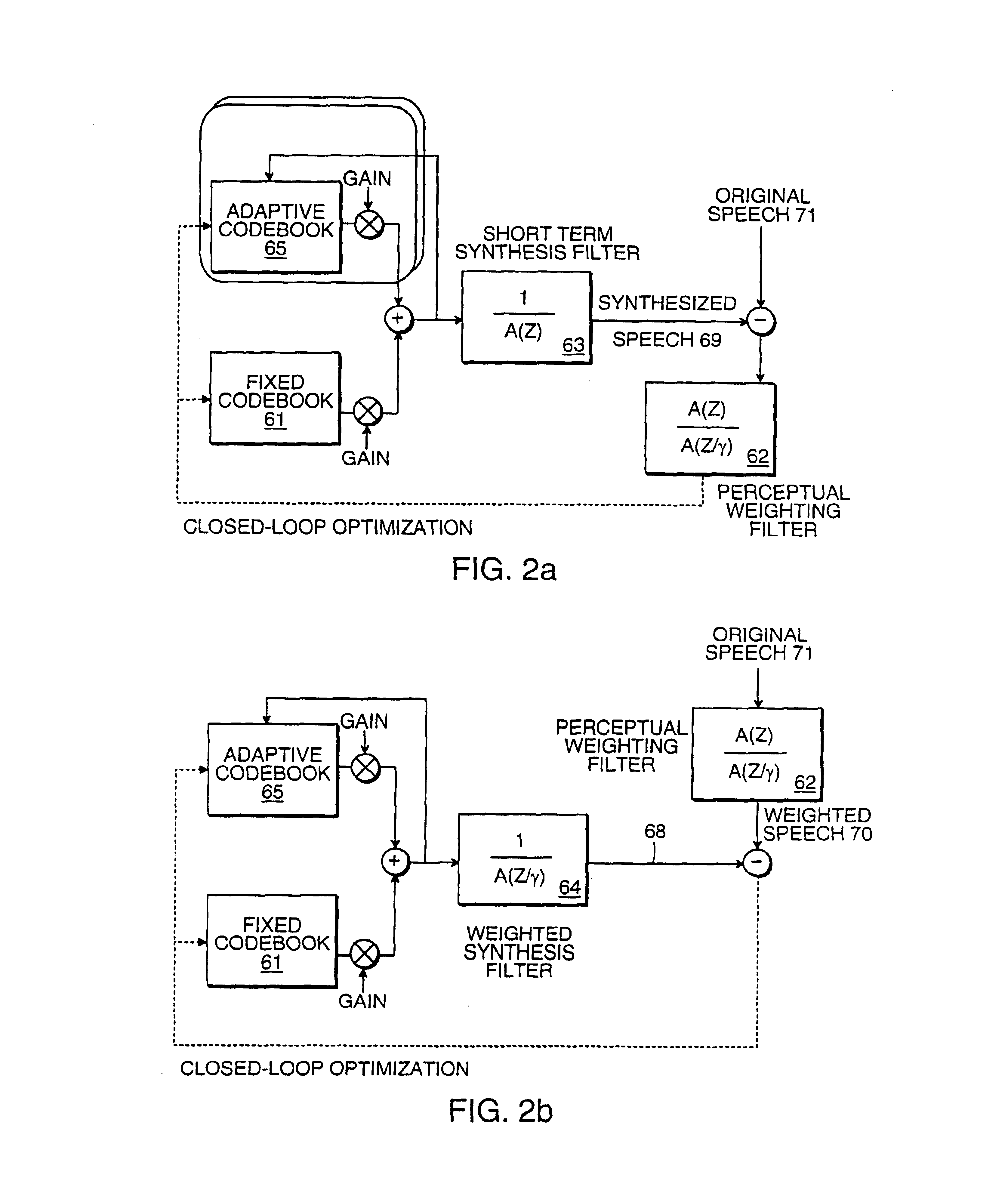LPAS speech coder using vector quantized, multi-codebook, multi-tap pitch predictor and optimized ternary source excitation codebook derivation
a speech coder and vector quantization technology, applied in the field of linear prediction analysisbysynthesis (lpas) based speech coding, can solve the problems of increasing the computational complexity and memory requirements of the coder, and the other very computationally expensive algorithm in the lpas based coder is the fixed codebook search algorithm, so as to reduce the computational complexity and memory requirements (mips/ram/rom), and maintain the speech quality
- Summary
- Abstract
- Description
- Claims
- Application Information
AI Technical Summary
Benefits of technology
Problems solved by technology
Method used
Image
Examples
example
The following example uses the above described fast, fixed codebook search for creating and searching a 16-bit codebook with subframe size of 56 samples. The excitation vector consists of four blocks. In each block, a pulse can take any of seven possible positions. Therefore, 3 bits are required to encode pulse positions. The sign of each pulse is encoded with 1 bit. The eighth index in the pulse position is utilized to indicate the existence of a pulse in the block. A total of 16 bits are thus required to encode four pulses (i.e., the pulses of the four excitation vector blocks).
By using the above described procedure, the pulse position and signs of the pulses in the subject blocks are obtained as follows. Table 3 further summarizes and illustrates the example 16-bit excitation codebook. p1=maxj{abs(sbf(j))}j=0,2,4,6,8,10,12v(p1)=sbf(p1)p2=maxj{abs(sbf(j))} j=14,16,18,20,22,24,26v(p2)=sbf(p2)p3=maxj{abs(sbf(j))}j=28,30,32,34,36,38,40v(p3)=sbf(p3)p4=maxj{abs...
PUM
 Login to View More
Login to View More Abstract
Description
Claims
Application Information
 Login to View More
Login to View More - R&D
- Intellectual Property
- Life Sciences
- Materials
- Tech Scout
- Unparalleled Data Quality
- Higher Quality Content
- 60% Fewer Hallucinations
Browse by: Latest US Patents, China's latest patents, Technical Efficacy Thesaurus, Application Domain, Technology Topic, Popular Technical Reports.
© 2025 PatSnap. All rights reserved.Legal|Privacy policy|Modern Slavery Act Transparency Statement|Sitemap|About US| Contact US: help@patsnap.com



